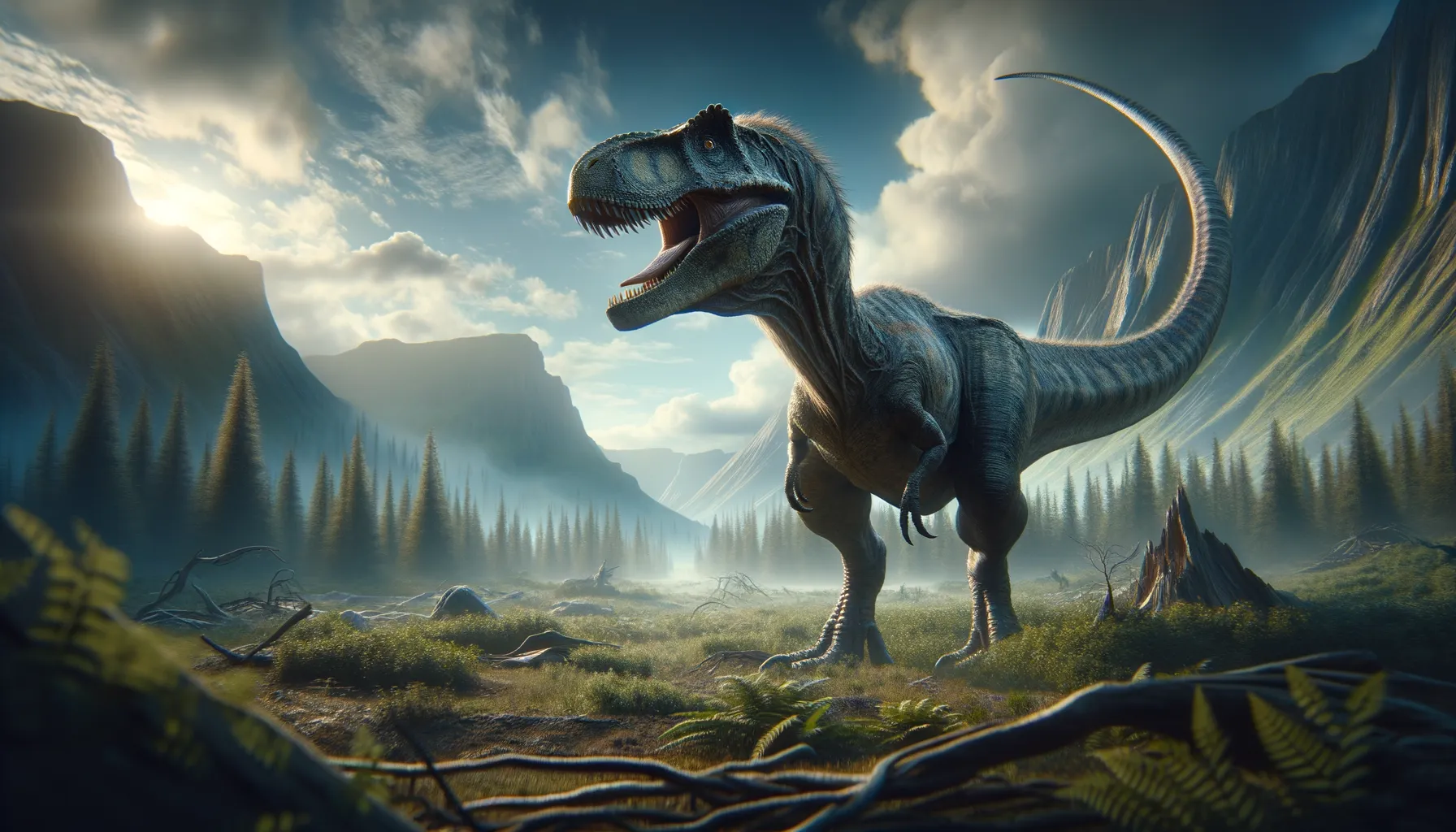
Sinraptor
A mighty hunter of ancient lands!
Period
Jurassic
Length
Reached lengths of about 23 feet.
Height
Stood between 10 and 12 feet tall.
Weight
Weighed approximately 1 to 2 tons.
Sinraptor was a medium-sized carnivorous dinosaur that stalked the lands of what is now China during the Late Jurassic period. Known for its sharp teeth and keen senses, Sinraptor was a formidable predator of its time. Its discovery in the Dashanpu Formation provided insights into the diverse ecosystem in which it thrived. The Sinraptor's role as a top predator showcases its adaptability and importance in the ancient food chains.
Diet
Sinraptor was a carnivore, primarily preying on smaller dinosaurs and other reptiles. Its sharp teeth and powerful jaws suggest it was well-equipped to tear through flesh.
Hunting
Sinraptor likely hunted alone or in small groups, using its speed and agility to ambush prey. Its keen senses would have played a crucial role in locating food in dense environments.
Environmental challenges
During the Jurassic period, Sinraptor faced challenges like varying climate conditions and competition from other predators. Adapting to these changes was key to its survival. The competition for resources likely shaped its behavior and hunting strategies, making it a proficient hunter. Periods of drought might have affected available prey, demanding flexibility in its diet.
Speed
Moderate speed, likely up to 25 mph.
Lifespan
Estimated around 20 to 30 years.
First discovery
First discovered in China in the mid-1980s.
Fun Facts
- Sinraptor means 'Chinese thief', though it wasn't actually a raptor.
- Despite its name, Sinraptor was not a small dinosaur; it was around 25 feet long.
- Sinraptor lived during the Late Jurassic period, about 160 million years ago.
- Fossils of Sinraptor have been found in China, suggesting it roamed Asia.
- Sinraptor was a predator and had sharp teeth for eating meat.
- It was part of a group of dinosaurs called theropods, which also includes the famous T. rex.
- Sinraptor's discovery helped scientists learn more about the diversity of large theropods in Asia.
Growth and Development
Sinraptor grew rapidly during its early years, achieving significant size to avoid predation. As it matured, it developed formidable physical traits like stronger limbs and larger teeth. The growth rate would have slowed as it approached adulthood, focusing energy on reproduction. Fossil evidence suggests that juveniles had different proportions than adults, adapting as they aged.
Habitat
Sinraptor inhabited a forested environment rich in flora and fauna. The region was characterized by a warm climate with semi-arid conditions, conducive to supporting large herbivorous dinosaurs and predators alike. Access to water sources was vital for its survival, influencing its territorial range. Its habitat would have included both open areas and dense forest, providing opportunities for stalking prey.
Interaction with other species
As a top predator, Sinraptor interacted mainly with other dinosaurs that served as its prey. It would have competed with other large carnivores for resources, sometimes leading to direct confrontations. Smaller carnivorous dinosaurs would have been both its rivals and possible prey. The presence of Sinraptor likely influenced the behavior and distribution of herbivorous species in the area.
Natural lifespan
Sinraptor's lifespan likely allowed it to reach its reproductive peak.
Reproduction
Sinraptor likely laid eggs, similar to other theropods, in carefully chosen nesting sites. Parental care, if any, would have been minimal, with hatchlings quickly becoming independent. Reproductive success was probably influenced by environmental factors such as resource availability. Display structures or behaviors may have been used to attract mates during breeding seasons.
Social behaviour
Sinraptor may have exhibited some form of social structure while hunting or during breeding. Evidence suggests possible pack hunting behavior, though solitary behaviors can't be ruled out. Interaction within its species likely involved vocalizations or displays to communicate. These interactions would have been crucial for maintaining territorial boundaries and securing mates.
Fossil locations
Significant Sinraptor fossils have been discovered in the Sichuan Province of China. These locations are part of the rich Dashanpu Formation, which has yielded numerous dinosaur fossils. The findings have provided a better understanding of the Late Jurassic ecosystems. Fossils from this region have helped establish relationships between Sinraptor and other theropod species.
